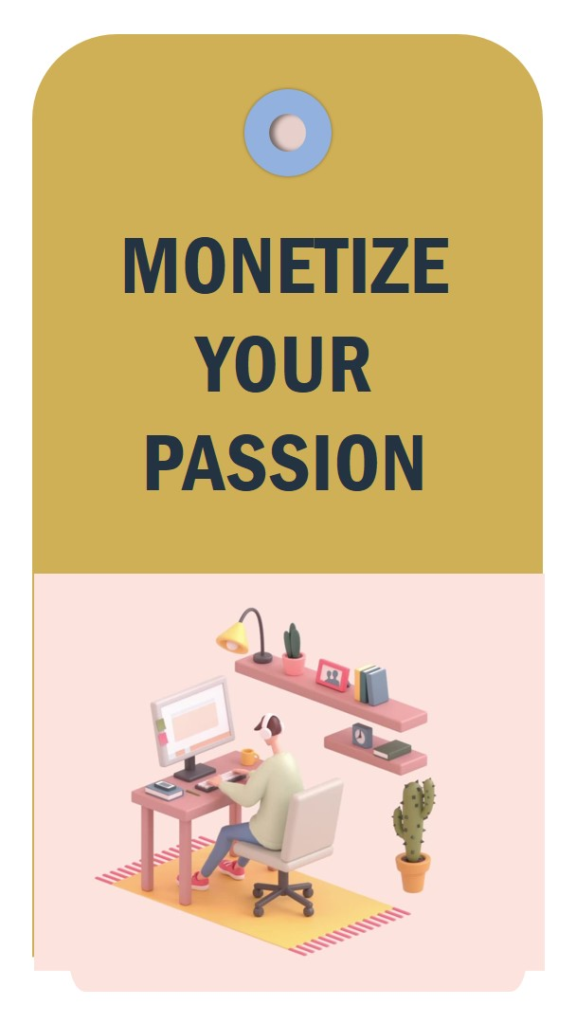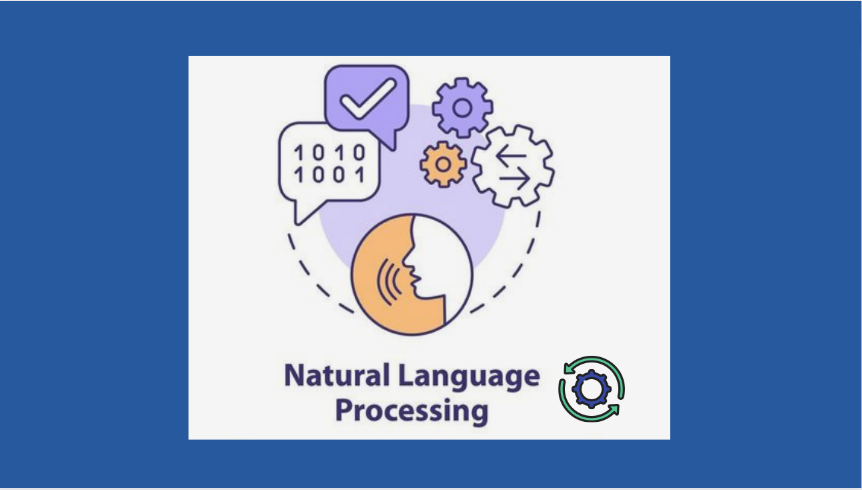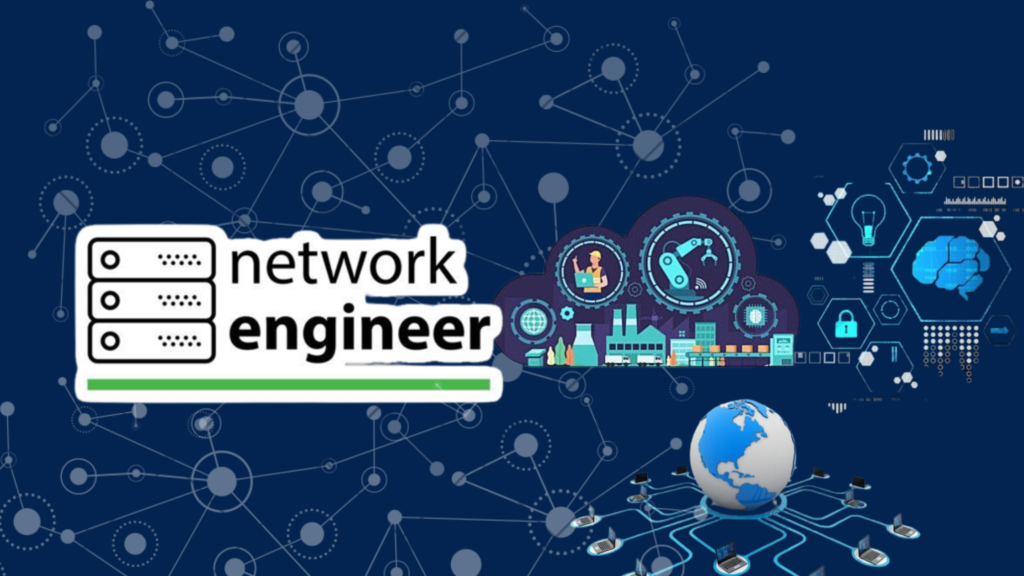Content Creator: A Kaleidoscope of Digital Expression
In the digital age, content creator emerges as a vibrant tapestry, woven from diverse threads of creativity and communication. It’s an art, crafting messages and stories that resonate, inform, and entertain a global audience. Content creator is an artist, storytellers, and the educators in this digital realm, bringing their unique perspective to the canvas of the internet.
At its core, content creation is about generating material that engages and captivates. This material takes many forms, each with its distinct rhythm and appeal.
Each form of content creation carries its unique flavor and requires a distinct set of skills and tools. Yet, at their core, they all serve the purpose of forging connections, sparking conversations, and building communities in the ever-evolving digital landscape. As we peel back the layers of content creation, we uncover not just the how, but also the why, exploring the profound impact of each word typed, each video shot, and each podcast recorded.
- Blogging: A realm of words where creators share insights, stories, and expertise. Blogs range from personal narratives to professional advisories, offering a spectrum of content that educates, entertains, and informs.
- Video Production: The visual heartbeat of content creation. From short-form videos on platforms like TikTok to in-depth tutorials on YouTube, video content is as diverse as it is dynamic, catering to a myriad of interests and learning styles.
- Podcasting: The voice of the digital era. Podcasts offer a personal touch, bringing topics to life through conversation, interviews, and storytelling, allowing listeners to dive into subjects ranging from daily news to niche hobbies.
- Social Media Posts: The pulse of real-time engagement. Whether it’s tweets, Instagram stories, or LinkedIn articles, social media content is about instant connection, sharing thoughts, trends, and moments as they unfold.
- Evolution of Content Creation: Navigating the Shift from Traditional to Digital
- Profile of a Content Creator: Crafting Narratives Across Niches
- Tools and Technologies: The Backbone of Content Creation
- Content Strategy: The Compass in Your Content Creation Journey
- Monetization: Turning Content into Currency
- Legal and Ethical Considerations: Navigating the Fine Line in Content Creation
- Future Trends in Content Creation: Embracing the New Digital Horizon
- Conclusion: Charting the Course of Content Creation
- FAQs
Evolution of Content Creation: Navigating the Shift from Traditional to Digital
The world of content creation has gone through a change growing alongside progress. This transition, from media to the era represents a notable transformation, not only in how content is made and shared but also, in how people interact with it.
In the era of traditional media, content was a one-way street. Newspapers, radio, and television shaped narratives and informed the public. Audiences were passive recipients, absorbing information without a direct avenue for interaction or feedback.
Enter the digital age – a revolution that redefined the essence of content creation. The advent of the internet and, subsequently, social media platforms, turned the tables, marking a shift from passive consumption to active creation. Suddenly, everyone had a voice and a platform to share it.
The digital era has brought about a shift, in content creation. Its no longer limited to studios or media companies. The emergence of blogs, vlogs, podcasts and social media platforms has opened up avenues for expression. Now anyone, with a smartphone and an idea can become a content creator. This period is characterized by its immediacy, interactivity and inclusiveness. Content is not just consumed passively; its actively engaged with shared and even collaboratively created. This has fostered communities of creators and consumers who engage in conversations.
The rise of platforms like YouTube, Instagram, and TikTok has further fuelled this transformation. They’ve not just been platforms for sharing content but have also served as incubators for innovation in content creation. From high-definition video blogs to interactive live streams, the digital age continually pushes the boundaries of how content is created, shared, and experienced.
As technology progresses content creation also evolves. The coming years hold prospects, with augmented reality (AR) and virtual reality (VR) enabling immersive and interactive content experiences. However, the core concept remains unchanged – a transition from consumption to engagement where individuals have the power to create and consume content simultaneously shaping a world where everyone can be both a creator and a consumer.
Profile of a Content Creator: Crafting Narratives Across Niches
Embarking on the path of content creation is a journey as unique as the creators themselves. These digital artisans come from a mosaic of backgrounds, each weaving their distinct tapestry of stories, knowledge, and experiences. The profile of a content creator is not confined to a single archetype; rather, it’s a spectrum that celebrates diversity and passion.
There are reasons why content creators do what they do. Some are drawn to the idea of turning their passions into a profession while others find satisfaction, in sharing their expertise or building a community around a shared interest. Financial gain, flexibility and independence also play a role for some as does the desire for expression. No matter the driving force, behind it all every content creator shares one goal; to make an impactful connection with their audience and contribute to the ever-evolving digital narrative.
Different individuals take paths when it comes to venturing into content creation. The backgrounds of creators are as diverse, as the content they produce. Some have received education, in marketing, journalism or the arts while others have acquired their skills through self learning and a relentless desire to gain knowledge. This range of backgrounds contributes to a content environment offering a wider selection of diverse and captivating material that caters to a broad spectrum of preferences and interests.
The realm of content creation is a kaleidoscope of niches and industries, each vibrant with its own community and culture. From the world of fashion blogging to the realms of tech vlogging, from gourmet cooking channels to fitness and wellness sites, content creators are the beating heart of these niches. They not only provide valuable information and entertainment but also foster communities and drive trends. The industry a content creator chooses is often a reflection of their personal interests and expertise, making each piece of content a personal and professional testament to their dedication and passion.
Essentially content creators have a profile that is characterized by their interests, strong passion and dedication, to providing value to their audience. It’s a role that goes beyond job descriptions embodying the essence of innovation and the unwavering pursuit of professional satisfaction. As the digital world keeps evolving so will the profiles of individuals who aim to make an impact on it through their content creation one piece, at a time.
Tools and Technologies: The Backbone of Content Creation
In the dynamic world of content creation, the tools and technologies creators use are as integral as the ideas they bring to life. These resources range from high-end hardware for capturing content to sophisticated software for editing and enhancing it, not to mention the platforms for distributing the final product to an eager audience.
Here’s the table with social media tools used by content creators:
| Category | Tool | Description | Link |
|---|---|---|---|
| Video Editing | Microsoft Clip Champ | Industry-standard video editing software | Microsoft clip champ |
| Audio Editing | Audacity | Free, open-source audio editing software | Audacity |
| Graphic Design | Adobe Photoshop | Leading software for image editing | Adobe Photoshop |
| Blogging | WordPress | Popular platform for website and blog creation | WordPress |
| Distribution | YouTube | Major platform for video sharing | YouTube |
| Distribution | Popular platform for photo and short video sharing | ||
| Distribution | Platform known for microblogging and networking | ||
| Distribution | Professional networking and content distribution | ||
| Distribution | TikTok | Leading platform for short-form mobile videos | TikTok |
| Distribution | A platform for sharing and discovering new interests |
Hardware Essentials
Content creators rely on a suite of hardware tools tailored to their specific needs. High-resolution cameras and drones capture breathtaking visuals for videographers. Crisp microphones and mixers are the allies of podcasters, ensuring clear and captivating audio. And for the bloggers and writers, a reliable computer or tablet stands as the fundamental tool for crafting and refining their written content.
Software Solutions
Once the content is captured, the magic of editing begins. Software solutions come into play, transforming raw footage or drafts into polished final products. Video editors like Adobe Premiere Pro and Final Cut Pro offer a range of functionalities to bring cinematic quality to footage. For the bloggers and graphic designers, tools like WordPress and Adobe Photoshop provide the canvas to design compelling websites and visuals. Podcasters turn to Audacity or Adobe Audition to edit their audio files, ensuring clarity and engagement in every episode.
Distribution Platforms
The journey doesn’t end with creation and editing; distribution is key. Social media platforms like Instagram, YouTube, and TikTok offer vast audiences for video content. Podcasters distribute their episodes through platforms like Spotify and Apple Podcasts. Bloggers leverage the power of SEO on platforms like Medium or their personal websites to reach readers worldwide.
Content Strategy: The Compass in Your Content Creation Journey
A well-crafted content strategy acts as the compass guiding your creative endeavours, ensuring every piece of content aligns with your goals, resonates with your audience, and stands out in the vast digital landscape. It’s not merely about producing content; it’s about producing relevant, engaging, and valuable content that serves a purpose.
Knowing your audience is essential, for developing a content strategy. It involves comprehending their requirements, preferences and the obstacles they encounter. By customizing your content to address these factors you establish a connection that makes your content more relatable and influential.
Platform-Specific Strategies
Each social media platform has its unique language and audience. Instagram is visual, Twitter is concise, LinkedIn is professional, and YouTube is immersive. Crafting your content to fit the platform’s nature increases its appeal and effectiveness.
SEO
Search Engine Optimization is your ally in ensuring your content reaches its intended audience. Incorporating SEO practices like keyword research, meta descriptions, and quality backlinks helps your content rank higher on search engine results, enhancing visibility and engagement.
Consistency
Consistency in content creation builds a loyal audience. It’s about maintaining a regular posting schedule and a consistent tone and style. This consistency helps in establishing your brand’s identity and keeps your audience coming back for more.
Table with External Links for Further Reading:
| Topic | Description | Link |
|---|---|---|
| Audience Understanding | Guide on how to understand and target your audience. | Audience Guide |
| SEO | Comprehensive guide on SEO for content creators | SEO Guide |
| Platform Strategies | Tips for creating content for different platforms. | |
| Content Consistency | Importance of consistency in content creation |
Monetization: Turning Content into Currency
When it comes to creating content making money is not a bonus but a crucial element that keeps the creative process going. Content creators have options to turn their passion into profit each, with its own set of opportunities and challenges.
Advertising: This is the approach. Platforms like Google AdSense or YouTube monetization give creators the opportunity to earn money through advertisements displayed on their content. It’s simple – more views generally translate into earnings.

Sponsorships: These involve partnerships where businesses pay creators to promote their products or services within the content. It requires finding a balance – maintaining your voice while effectively conveying the sponsor’s message.
Merchandise: Selling branded merchandise provides a way to monetize your content. Whether it’s selling T shirts, mugs or digital products merchandise can turn your audience into walking billboards for your brand.
Memberships: Platforms like Patreon allow creators to offer content, perks or experiences to subscribers for a fee. It’s about building a connection with your audience and providing them with value paying for.
Crowdfunding: Websites such as Kickstarter or GoFundMe enable creators to raise funds, for projects or ventures. It’s a way of involving your community in your journey making them an integral part of what you do.
Legal and Ethical Considerations: Navigating the Fine Line in Content Creation
In the world of creating content having an understanding of legal and ethical frameworks is incredibly important. It’s all, about showing respect for ownership valuing creativity and being transparent and genuine with your audience.
Copyright Laws: These laws exist to safeguard works produced by authors. As a content creator it’s crucial to honour these laws by refraining from using copyrighted material without permission or proper attribution. This ensures that creators receive the credit and compensation they deserve for their work.
Fair Use: This doctrine allows for usage of copyrighted material without permission in instances such as news reporting, teaching or creating parodies. However, it’s important to recognize that fair use has its complexities. It’s not a blanket approval. Requires careful consideration of factors like the purpose of use and the nature of the copyrighted work.
Genuine Expression: In this era authenticity holds value. It means staying true to your voice and ensuring that your content genuinely reflects your perspective. Being authentic helps you build an audience.
Disclosure of Sponsorships: Transparency is paramount when it comes to sponsored content. Disclosing sponsorships or partnerships maintains your credibility and upholds regulatory standards. It’s about being upfront, with your audience so they’re aware if any commercial relationships may influence the content you create.
Understanding and adhering to the ethical considerations of content creation extends beyond compliance. It involves showing respect, for the community valuing the trust of your audience and cultivating an environment that nurtures both creativity and integrity together.
Future Trends in Content Creation: Embracing the New Digital Horizon

The future of content creation is on the brink of a revolution with emerging technologies such as AI (Artificial Intelligence), VR (Virtual Reality) and AR (Augmented Reality) reshaping how we create and consume content.
AI in Content Creation
Artificial Intelligence is set to transform content creation by automating aspects of the process. From personalized content based on data to text and visuals generated by AI the possibilities are immense. AI can also assist in understanding audience preferences enabling creators to produce impactful content.
VR and Content Experience
VR provides an unparalleled immersive experience. In the future, content creators may create 360-degree experiences that transport audiences to different realms. This technology has potential for storytelling, educational content and interactive gaming.
AR and Interactive Content
Augmented Reality adds a layer to the real world. Content creators can use AR to overlay information, on objects or environments offering engaging and interactive experiences. This innovation has the potential to revolutionize marketing, educational content and everyday storytelling.
New Forms of Content
As these technologies advance further, we may witness the emergence of other forms of content. The future of creation combines advancements with imaginative storytelling. As creators embrace these technologies the methods in which we tell, share and engage with stories are poised to undergo a transformation unveiling possibilities within the digital content realm.
One potential direction, for the future involves story experiences, where the audience plays a role in shaping the narrative. Additionally, AI generated personalized content feeds and educational materials utilizing augmented reality (AR) for hands on learning are among the possibilities, on the horizon.
Another aspect to consider is the impact of diminishing attention spans. As content is consumed at an increasing rate, future trends may place emphasis on delivering concise yet material. This could manifest through micro videos, interactive snippets and bite sized but informative blog posts tailored to cater to audiences decreasing attention spans.
To summarize we can expect a fusion of technology driven innovation and creative storytelling as we venture into the future of content creation. The fusion promises to redefine how stories are crafted, shared and experienced in landscapes while unlocking realms of potential.
Conclusion: Charting the Course of Content Creation
As we navigate the multifaceted world of content creation, it’s clear that this dynamic field is much more than just producing material; it’s about crafting meaningful connections, fostering communities, and constantly adapting to the digital landscape’s ever-changing contours.
Key Takeaways:
- Diverse Creator Profiles: Content creators come from varied backgrounds, driven by a mix of passion, creativity, and the pursuit of engagement and monetization.
- Integral Tools and Technologies: The right mix of hardware, software, and platforms is crucial, enabling creators to produce, edit, and distribute content effectively.
- Strategic Content Planning: A well-structured content strategy, tailored to the audience and platform, is pivotal for impactful and consistent content delivery.
- Monetization Avenues: Multiple streams, from advertising and sponsorships to merchandise and memberships, offer creators ways to sustain and grow their creative endeavours.
- Legal and Ethical Integrity: Navigating copyright laws, maintaining authenticity, and transparently disclosing sponsorships are non-negotiable for credibility and trust.
- Emerging Trends: The future beckons with innovations like AI, VR, and AR, set to redefine content creation, making it more interactive, personalized, and immersive.
Looking ahead, content creation is poised for exciting transformations. As technology evolves, so does the potential for creativity and interaction. The future promises a landscape where content is not just seen or heard but experienced in multi-dimensional, personalized ways. For content creators, the horizon is expansive, filled with opportunities to innovate, connect, and inspire. The journey of content creation is an ongoing narrative, with each creator adding their unique chapter to the digital storybook.
Visit my careers blog for other career paths.
FAQs
Based on the information retrieved, here are the top 10 FAQs for content creators with responses:
- What is your favorite social media platform to work on, and why?
- Creators prefer platforms that align with their content style and audience engagement. For instance, visual artists might prefer Instagram, while storytellers may choose YouTube or TikTok.
- Must I post content every day?
- Does content have to be my own?
- What if I only do video?
- How do I brand myself?
- How can content create trust?
- How do you stay motivated at work?
- Describe a time you failed in this role and the lesson you learned?
- What is your method of incorporating SEO in your content creation?
- How do you promote the content once it’s published?





